December 13: Trerice
Today's treat is from my dear friend, Catherine Brooks, of the Facebook page Not Just the Tudor Tracker. Thank you, Catherine!
Trerice
In July of this year, I visited the Elizabethan Manor house of Trerice. I love to visit Newquay in Cornwall, and it was only 3 miles from where we were staying – I had no idea!

Currently, under the umbrella of the National Trust, Trerice has been owned by the Arundell family for nearly 500 years and are oft absentee owners, so it has remained largely unchanged. Most of the work done to the house when they acquired it in the Elizabethan period was carried out/overseen by John Arundell V. The family’s wealth grew during the 16th and 17th centuries due to gaining positions in local government and also to securing advantageous marriages. The present house was completed in the early 1570s, incorporating the Elizabethan ‘E’ layout.
Whilst the house has undergone many changes over the centuries, it retains a number of its Elizabethan features. One of the most impressive, both then and now, is the Great East Window in the Great Hall. This spans two stories and contains 576 panes of glass, which, bearing in mind how expensive glass was in the Tudor period, was a real show of wealth! The plasterwork ceiling comprises several elements, the 1570's flair shown by the addition of spherical pendants. The overmantel is dated 1572 and is supported by male and female terms. There is a blank cartouche in the centre, and this may have been painted with the family’s coat of arms.
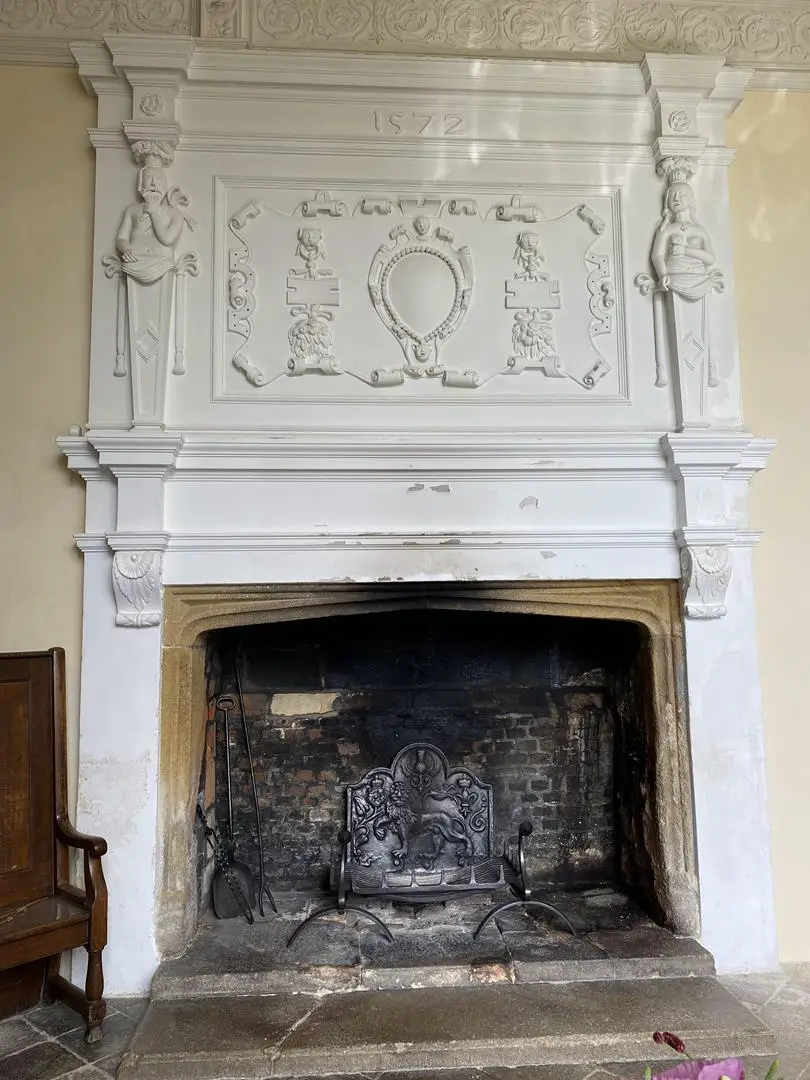
In the Drawing Room, which is likely to have been part of the original medieval building, the semi-circular bay window could have been added by John Arundell V in the 1570s. There is a tunnel under the floor, dating to the same time, which took the surface water from a spring close by to the Mill Leat on the other side of the house. The 19th-century staircase stairwell is contained in part of the Elizabethan Façade Arundell put in in 1572.
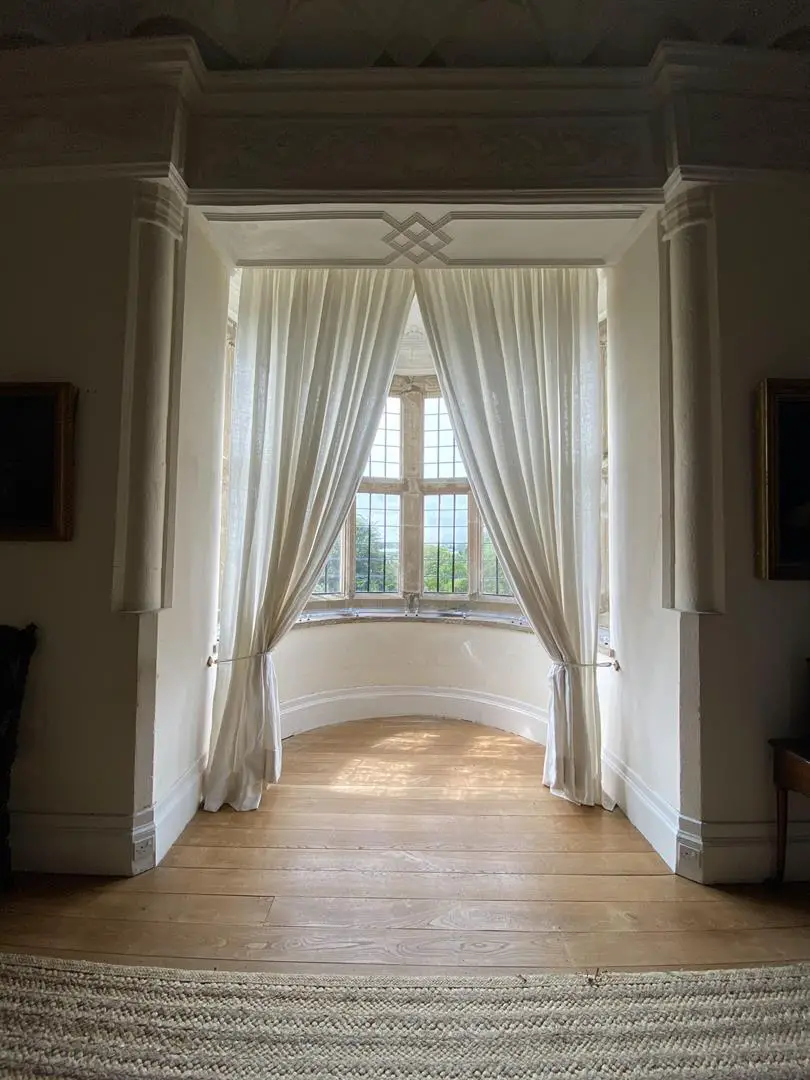
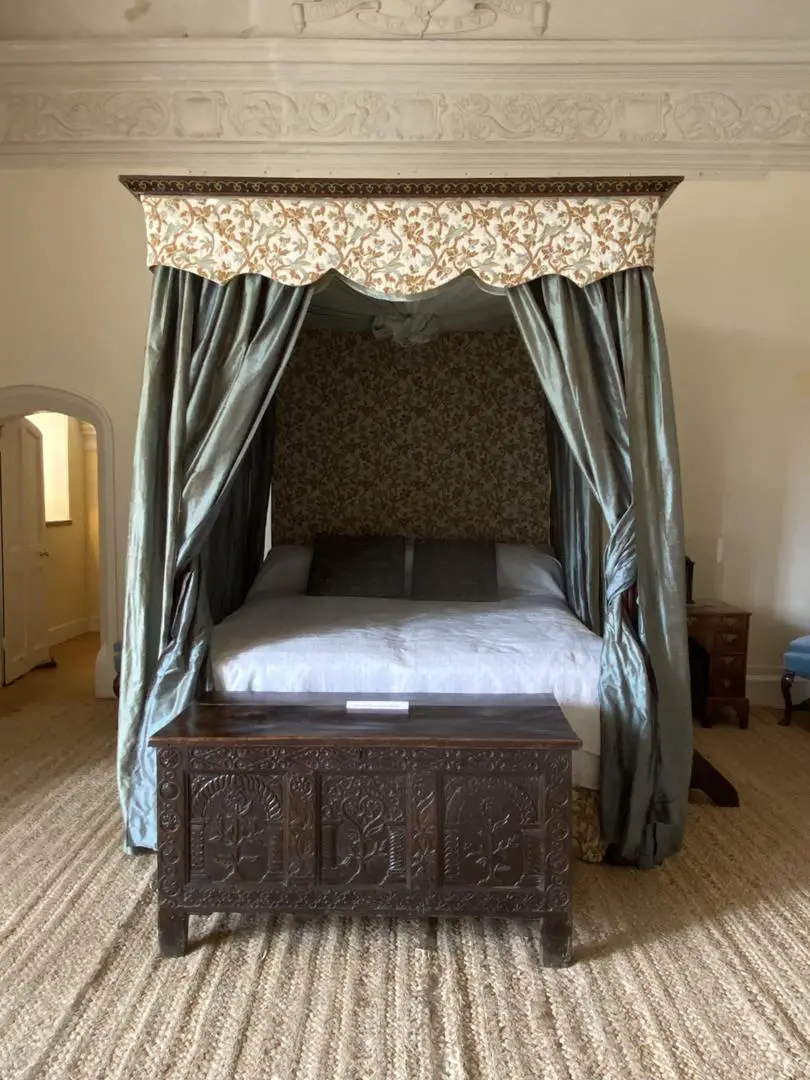
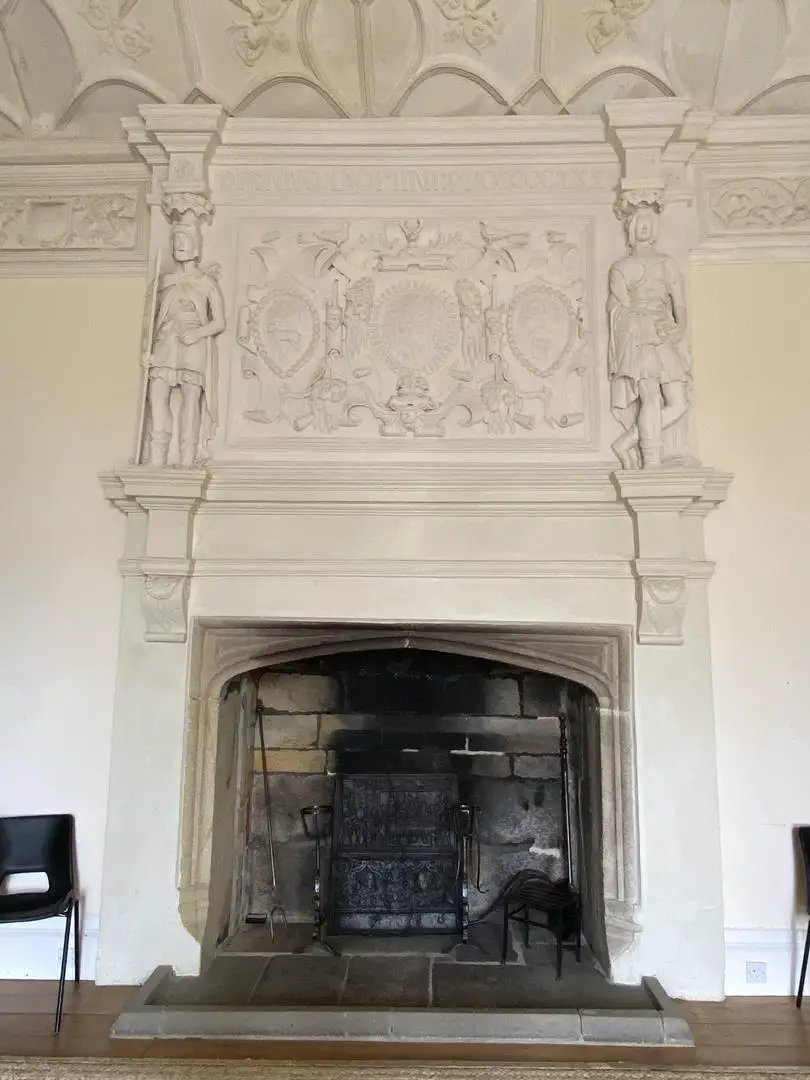
Upstairs, the Great Chamber became the main Reception room of the house, and its ceiling is probably its crowning Tudor jewel. The National Trust guidebook describes it as follows:
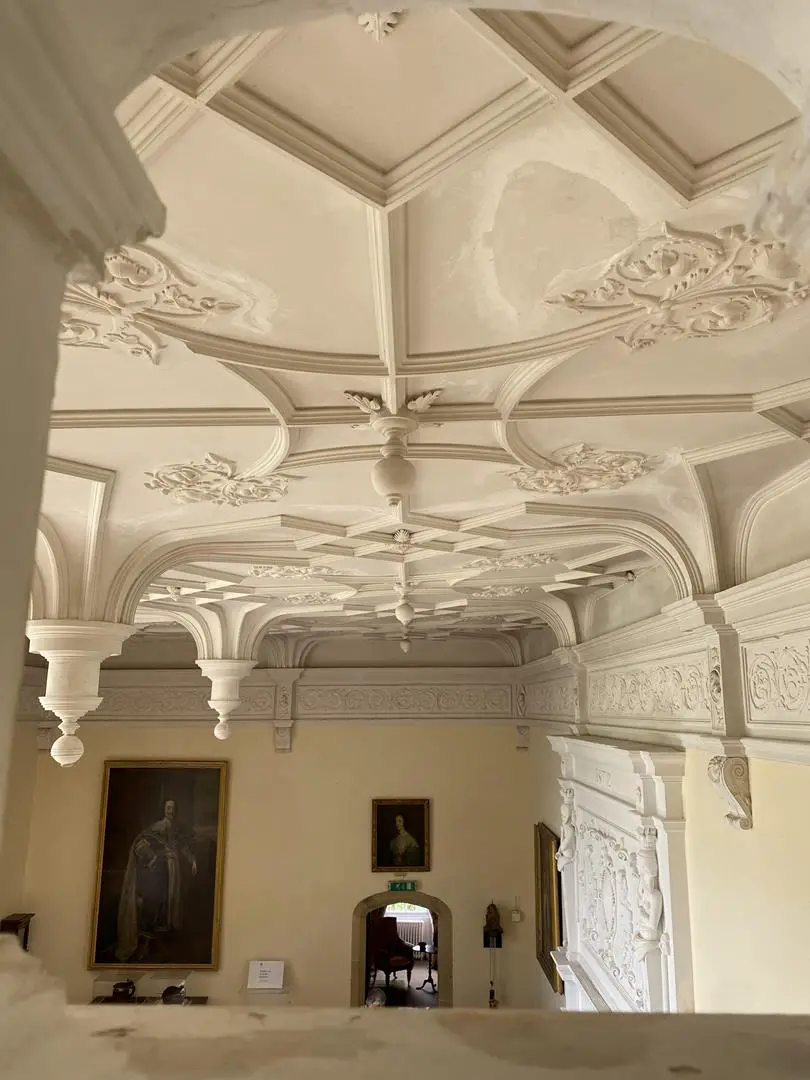
‘The elaborate plaster barrel ceiling is an admirable example of West Country workmanship from the 1570s’ Wooden lathes were attached to the underside of the joists, with plaster applied over the top. The plaster pendants were created using a timber frame with plaster moulded around them. The Tudor Rose motif was popular during the 16th century.’ (p. 9)
The sash windows here are from the 19th century, but although the ceiling pattern in the bay is different from the rest of the room, it still features the Tudor Rose.
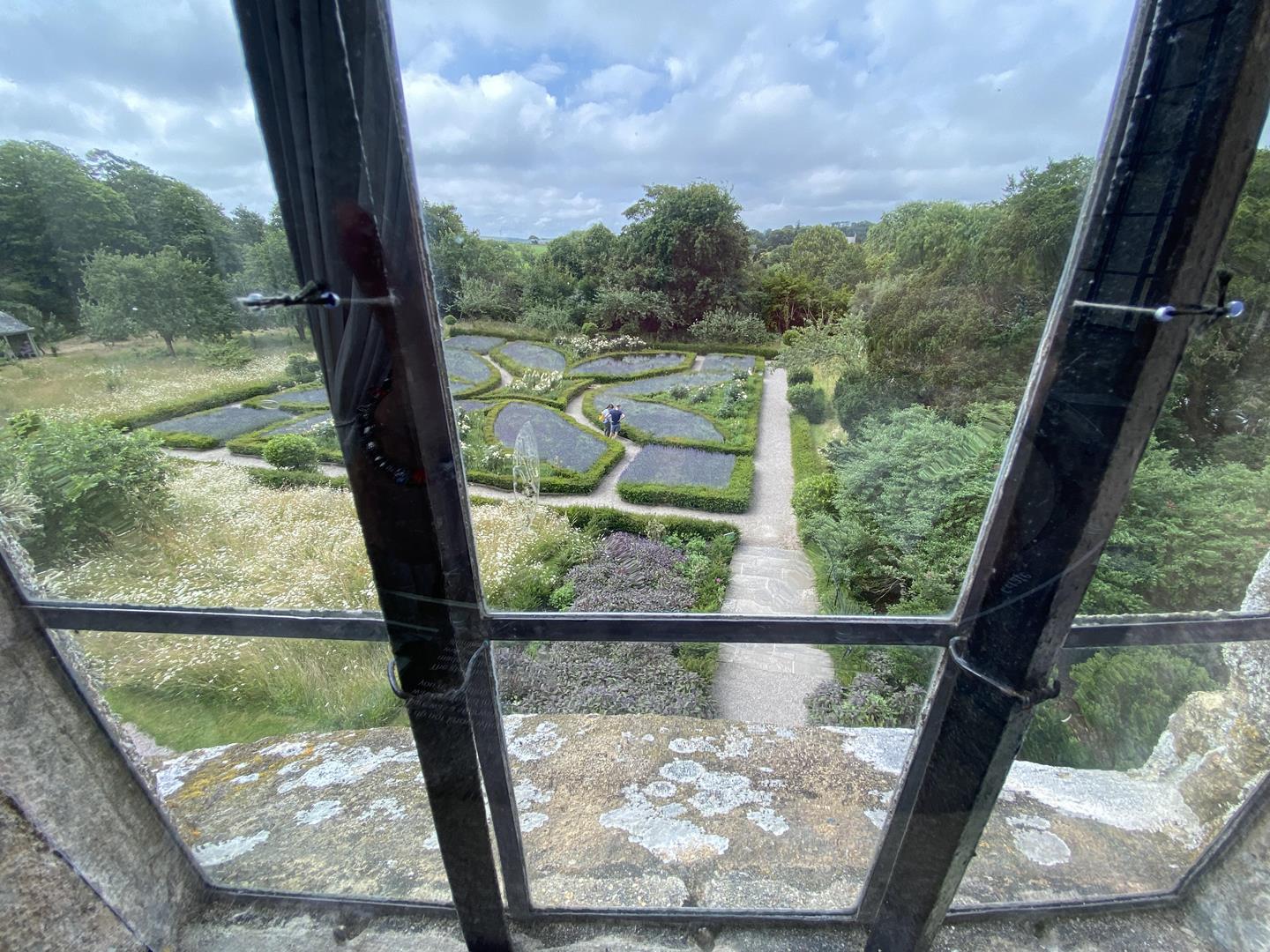
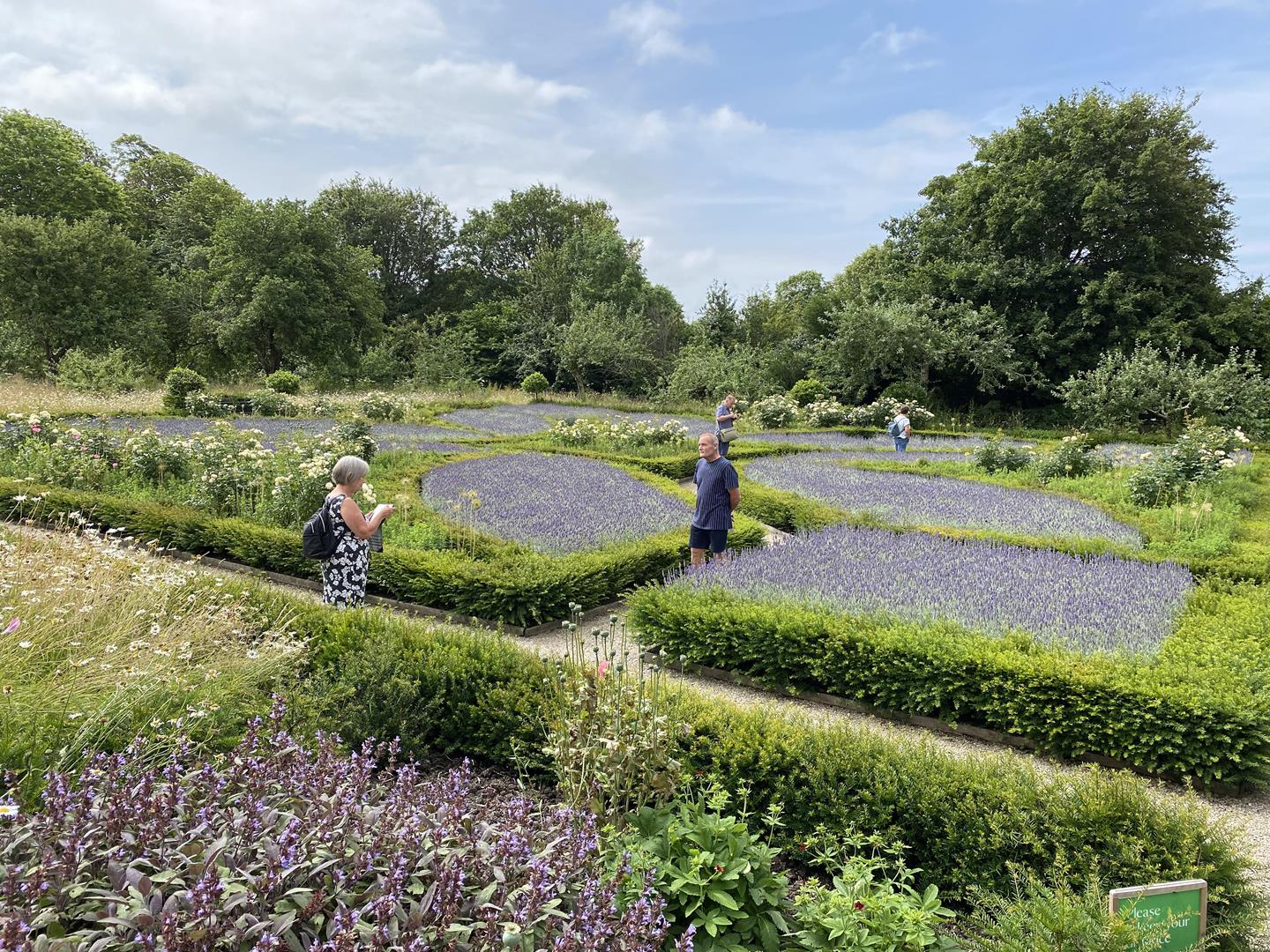
From the windows of the Great Chamber, you can see the gardens as they were in the Tudor period. Its location has been identified as the lowest of a suite of three Elizabethan garden terraces, which come up the hillside to the front of the house. This was once a formal Tudor garden, and the guide describes it as:
‘…laid out with intertwining low hedges of shrubs and herbs in geometric patterns. The garden would have been in a sunken area with a raised walk around it.’ (p. 16)
We were lucky enough to get a beautiful summer's day when we visited Trerice, making the gardens look even more attractive, with the bees and butterflies adorning the lavender. It really is a little gem. It also has a strong civil war history, if that's your thing. If you are visiting the West Country, then I highly recommend you make a visit!
P.S. Do make sure you're signed up on TheAnneBoleynFiles mailing list at HERE to hear about TWO Anne Boleyn online events.